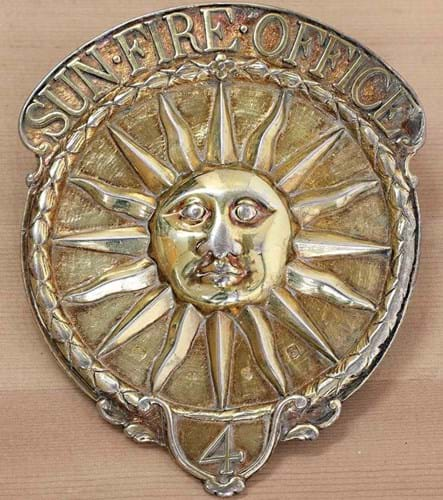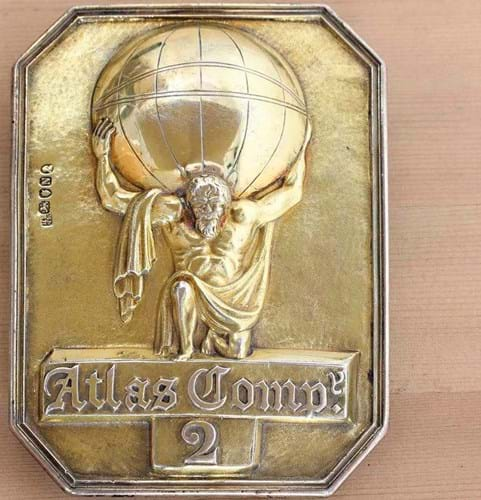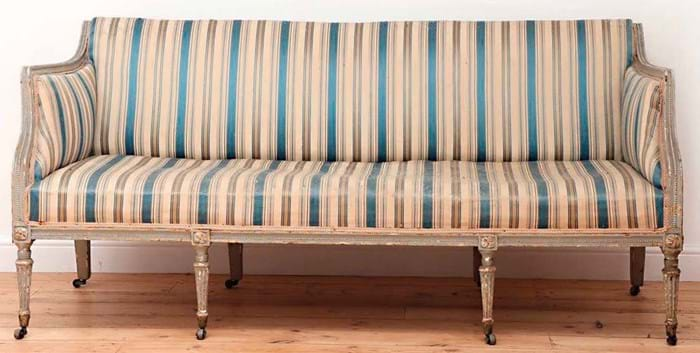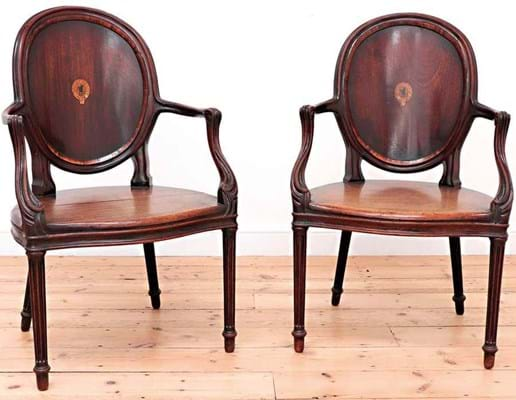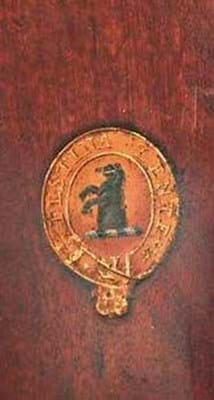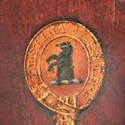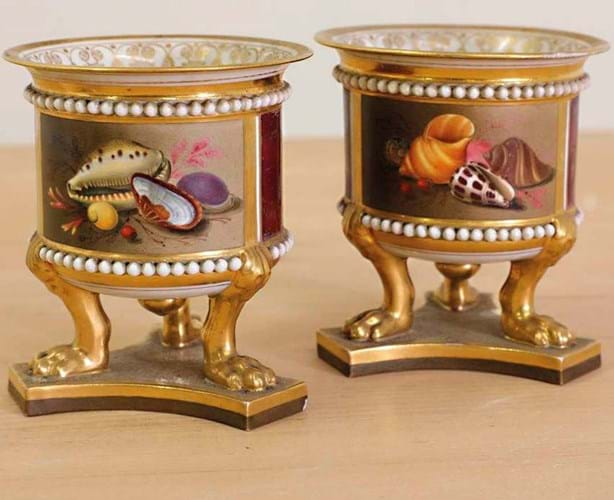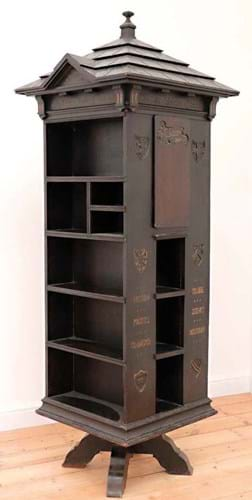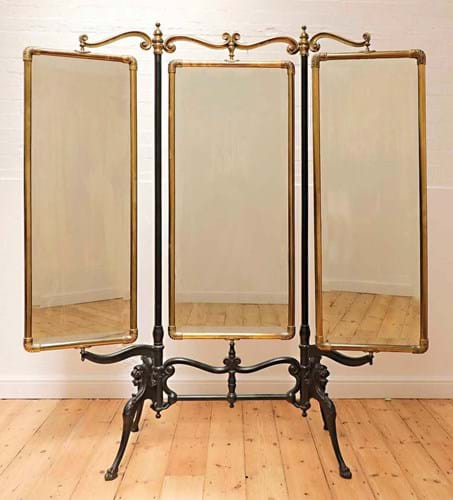These new insurance companies formed their own brigades which could be called on to fight fires or salvage items from the buildings that they had been paid to protect.
Typically, insured buildings would be identified by a metal plaque or firemark.
Firemen would be similarly identified by distinctive dress and badges of silver or silver-gilt to be worn on the sleeve in the manner of the Thames waterman.
So important was the job of these men that they were exempt from conscription into the navy after an act of Parliament in 1707.
Unlike fire insurance marks, which were made in large numbers in base metal, firemen’s badges were made in silver or silver gilt for brigades limited to no more than 30 men. This, along with the abuses of daily wear, explains why relatively few have survived today.
Insurance reminders
The single-owner collection of fire badges offered at Sworders’ September 14-15 Fine Interiors sale in Stansted Mountfitchet comprised a dozen examples from the mid-18th to the early 20th centuries.
Together they referenced both the oldest insurance companies in the world and the leading London silversmiths of the day.
A George III silver gilt Sun Fire Office fireman’s arm badge with the applied number 4 by Hester Bateman (London 1765) and another with the number 17 by Robert and David Hennell (London 1795) had both been purchased by the vendor in 2005 when The Royal & Sun Alliance Collection was dispersed at Christie’s South Kensington (CSK).
They carried guides of £1000-1500 and £500-700 respectively but sold at £2800 and £2200. Sixteen years ago they had made £3840 and £1920.
The Sun Fire Office, established in 1710, was followed a decade later by the founding of Royal Exchange Assurance in 1720.
Silver oval badges for the firm, bearing the cast inscription Royal Exchange Assurance 1720 include an example by Rebecca Eames and Edward Barnard (London 1823) sold at £1700.
Bought at CSK for £2585 in 2001 as part of the Royal Exchange Collection of Firemen’s Badges, a George III silver gilt Atlas Company badge numbered 2 and hallmarked only for London 1808 took £2300.
A rare William IV badge for the West of England Insurance Company decorated with the figure of King Alfred to the centre by Philip Venner Firmin (London, 1836) brought £2800.
Two George III silver passes made for directors of the Westminster Fire Office were expected to bring £300-400 but hammered at £700. One is inscribed verso Mr Thomas Cadby Director 1794 & 1795, the other Mr John Brown, Director, 1801 & 1802.
Hall sofas
Four sofas from a suite of seat furniture made for Raynham Hall, Norfolk, in the 1790s carried the sale’s highest expectations.
These were almost certainly commissioned by George, 1st Marquess Townshend (d.1807) who enjoyed a glittering military career serving under General James Wolfe at the siege of Quebec in 1759 and was appointed Lord Lieutenant of Ireland from 1767-1772. His second wife, Anne Montgomery, was Mistress of the Robes to Caroline, Princess of Wales, from 1795-1820.
These sofas (later painted grey by Sibyl Colefax, with traces of the original gilding beneath) were part of a suite conceived in the ‘French antique’ or ‘Grecian’ style championed by Henry Holland and other francophiles in the retinue of the Prince Regent.
Both are recorded in the drawing room at Raynham alongside other parts of the suite in an inventory taken after the untimely death of the 2nd Marquess in 1811.
In 1909, Country Life photographed the suite in situ at Raynham Hall, in the ‘Red Drawing Room’ and ‘Dining-room’.
The suite was inherited in the Victorian era by Captain John Townshend (d.1863), a Royal Navy rear-admiral and MP for Tamworth from 1847-55, and had since come by descent to Alison, 8th Marquess Townshend at Raynham Hall.
A set of 16 chairs from the same set was sold at Christie’s for £31,250 in 2013. Sworders offered the sofas as two pairs, estimated at £5000-8000 a pair, and they sold at £7500 and £10,000.
In fact, there was more competition for a pair of oval-backed mahogany armchairs in the manner of Mayhew and Ince that, guided at £4000-6000, made £27,000.
Dated c.1770-75, these carried painted crests thought to be those of the Barnard family of East Hall in Beverley, Yorkshire.
It seems likely that these chairs demonstrate an early use of the Barnard crest by Leuyns Boldero Barnard following his inheritance of the estate of his great-uncle in 1769. The house was remodelled in the late 18th century and again at the beginning of the 19th century when it was redesigned in the Gothic taste and renamed Cave Castle.
Revolving bookcase
Something very different was an American Arts & Crafts-style revolving bookcase that was once part of the short-lived enterprise known as the Tabard Inn Library.
The project – the brainchild of entrepreneur and promoter Seymour Eaton – championed a membership library located in drugs stores across the US with books, loaned to members at five cents each, housed in these 6ft 4in (1.93m) high ebonised oak bookcases with the carved inscription The Best Reading Rooms In the United States Are the Homes of the American People. The slogan With all the Red Tape on the Box references the sturdy black cases sealed with red tape that housed the books.
In an advert from 1902, Eaton claimed that 10,000 bookcases would be made and even managed to sell his franchise to WH Smith in the UK using similar bookcases that carry the legend inscribed with the Thomas Carlyle quotation The True University of These Days is a Collection of Books.
However, in March 1905 Eaton was declared bankrupt and his enterprise came to an abrupt end.
These are not common survivors (particularly in the UK), although it was the second offered at Sworders in as many sales. The firm sold one in March for £2600. An online bidder took this one for £2400.


